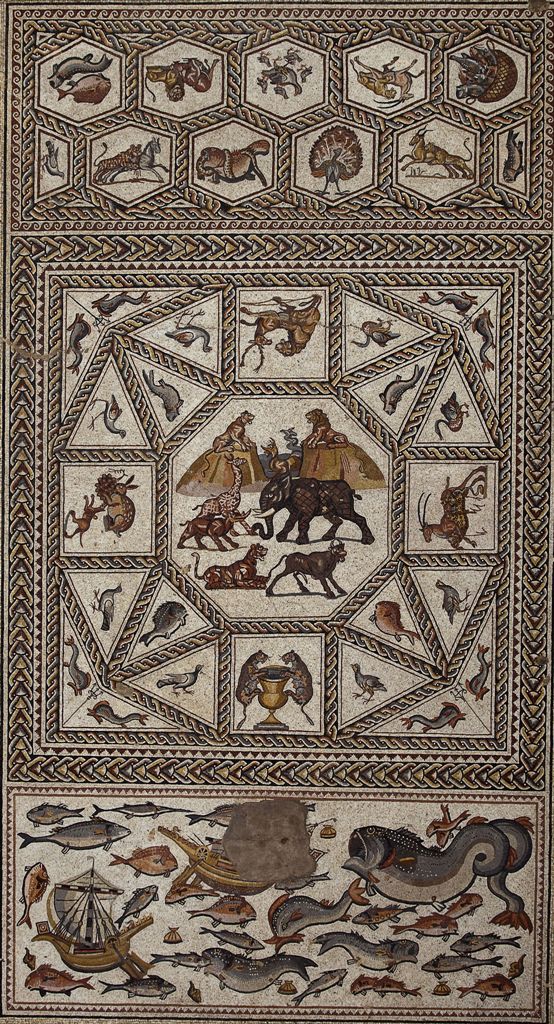This article, which first appeared in the Forward's blog The Arty Semite , is part of a cross-posting partnership with the Forward.
By Menachem Wecker
Though it features illustrations of a menagerie of animals that carry Jewish symbolism, an ancient Roman mosaic discovered in Lod, Israel, in 1996, is not a religious work, according to the Metropolitan Museum of Art, where the fourth-century artifact is on exhibit for the first time until April 3, 2011.

But virtually all of the animals depicted in the work — birds, bulls, a deer, a donkey, ducks, an elephant, fish, gazelles, a giraffe, hares, leopards, lions, a sea monster, a snake, peacocks, a rhino and a tiger — carry Jewish symbolism.
According to Shlomo Pesach Toperoff, author of The Animal Kingdom in Jewish Thought, the following animals carry biblical and rabbinic symbolism: donkeys (transportation, redeeming firstborn donkeys per Exodus 13:13, symbol of Issachar), birds (the mother must be shooed before accessing the eggs, doves as peace symbols), elephants (per Berakhot 56b, a wonderful sign when seen in dreams), fish (eaten on Rosh Hashanah to symbolize multiplying), gazelles (frequent appearances in Song of Songs, its speed idealized in Ethics of the Fathers), harts and hinds (symbol of Naphtali), bulls (the Red Heifer), leopards (a character in Daniel's dream, cited in the same part of Ethics of the Fathers as the gazelle), sea monsters (the Leviathan, a Talmudic regular), lions (tribe of Judah), peacocks (brought by King Solomon from Tarshish) and serpents (Edenic embodiment of evil, symbol of Dan).
Hares are sometimes depicted in scenes of Esau returning from the hunt in haggadahs, according to Marc Michael Epstein, professor of religion and Jewish studies at Vassar College and author of the book Dreams of Subversion in Medieval Jewish Art and Literature, which examines animal references in medieval art.
The Torah is referred to as a "loving doe" in the Shavuot prayers, Epstein adds, and hare hunts appear in haggadahs.
The ducks, giraffes, rhinos and tigers stand alone, but shouldn't 13 of 17 be compelling enough?
...continue reading "Is an Ancient Menagerie Pagan or Jewish?"

 Others, however, rejected this position out of hand and resolutely kept on keeping kosher, while still others (the majority, perhaps?) sought a middle ground, choosing, as
Others, however, rejected this position out of hand and resolutely kept on keeping kosher, while still others (the majority, perhaps?) sought a middle ground, choosing, as  Other posters, mixing their metaphors right and left, drew both on Orientalist imagery and the modern preoccupation with physical well-being. Summoning the "genie of Jaffa," who magically materialized from the inside of a Jaffa orange, this advertisement also summoned up the potent word "vitamins," and with it, the promise of good health.
Other posters, mixing their metaphors right and left, drew both on Orientalist imagery and the modern preoccupation with physical well-being. Summoning the "genie of Jaffa," who magically materialized from the inside of a Jaffa orange, this advertisement also summoned up the potent word "vitamins," and with it, the promise of good health.